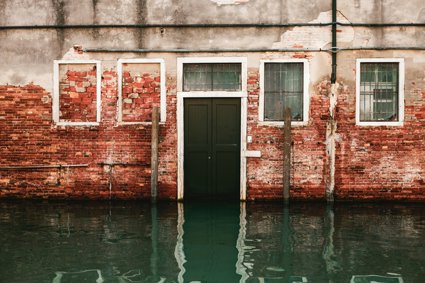
What are the causes of flooded homes?
This lesson explores the causes of flood risk
Key questions
What are the different causes of flooding?
What are tsunamis?
What are the different causes of flooding?
There are four main reasons that people living in the UK face a risk of flooding:
-
River flooding - When the river has burst its banks. This is due to heavy rainfall that has run off the land surrounding the river (this area is called the river valley and its boundary is called the watershed)
-
Coastal flooding - This can sometimes happen when there is a high tide and a storm is blowing at the same time
-
Pluvial flooding - This is a weird word, what can it mean? Basically, when heavy rainfall collects in hollows and depressions where homes are located, local floods can occur
-
Plumbing flooding - Broken pipes (when water in them freezes and expands) or broken boilers can cause floods. Old pipes and taps can break
What are tsunamis?
Tsunamis, or tidal waves, can have a devastating effect on coastal areas. Caused by earthquakes at sea, the readjustment of the crustal plates jolts the seabed by several metres and displaces hundreds of cubic kilometres of sea water which form waves moving out from the earthquake's epicentre. In deep water, the waves move quickly but as they approach the coastline the sea bed in shallow water slows the waves, causing them to increase in height. An animation of a tsunami is available on the BBC website.
The Asian tsunami of 26 December 2004 was caused by a magnitude 9.3 earthquake in the Indian Ocean off the coast of northwest Sumatra. Waves 20 metres high reached half a mile inland and over 200,000 people were killed in countries as far apart as Indonesia, the Maldives, Sri Lanka and Somalia. Further details on the Asian tsunami can be found in the case study resource that accompanies this lesson.
Starter
What does risk mean?
Have a go at the risk interactive activity or look at the what is risk presentation, both of which explain the meaning of the word risk.
What two things are required before there can be a risk?
What risks do you come across in your day to day life?
Main Activity
The four causes of flooding
Take a look at the types of flooding interactive resource which shows you the four main causes of flooding in homes in the UK and other countries. You can also read a definition of each in the types of flooding document.
Which of the causes of flooding do you think your home might be at risk from?
Are there any of the four that you can rule out?
To help you to remember these four causes of flooding, design a simple logo to represent each of them.
Tsunami
One very rare cause of extreme flooding was the Boxing Day tsunami of 2004. Which of the four types of flooding does this come under?
Your task is to present a news report on the tsunami to highlight the causes and the effects of this shocking event.
Read the Boxing Day tsunami case study which gives you some background information on the tsunami. You can also watch this BBC News footage of the event.
You now need to organise yourselves into groups of four, each of you taking one of the following roles:
-
News presenter - you are located in the studio. You will read the headlines and give some background to the event, explaining what has happened and giving the location. You then hand over to the roving reporter at the scene
-
Roving reporter- you are at the scene of the tsunami. You will be interviewing the geographer and the eye witness. You need to think up some questions to ask them. Ask the geographer about the causes of the extreme flooding, and the eye witness about the effects
-
Geographer - you will need to research the causes of the extreme flooding. The roving reporter will ask you some questions about this - make sure you find out what they are so that you can prepare your answers
-
Eye witness - you will need to find out about the effects of the extreme flooding. The roving reporter will ask you some questions about this - make sure you find out what they are so that you can prepare your answers
Here are some other websites you can visit for further information to help you with this task:
Your news report should last about three minutes. Maybe your teacher will film it for you so you can watch it back and see how you did.
Plenary
As with the tsunami, on very rare occasions extreme events can take place. Take a look at the extreme weather fact sheet, which gives some weather records in the UK and elsewhere.
Which of the facts surprises you the most?
In preparation for next lesson, have a look around your home to see where the electrical sockets are. How high above ground level are they? If you can, take some photos (on your digital camera or mobile phone) of any downstairs rooms in your home. Next lesson you can use these photos to assess the flood risk.
File nameFiles
File type
Size
Download
